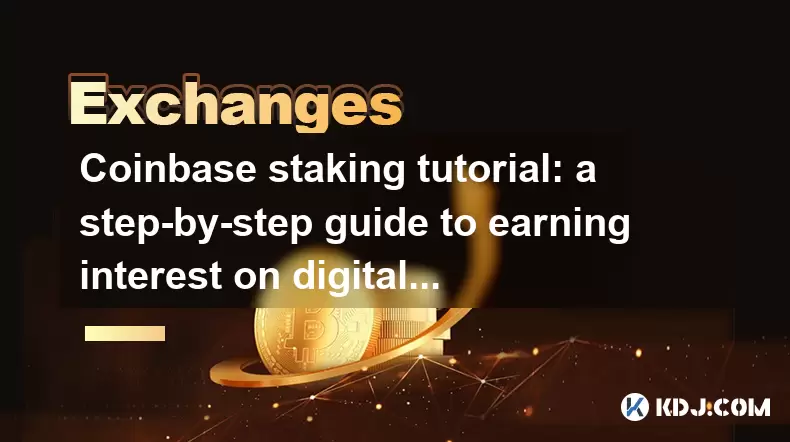-
 Bitcoin
Bitcoin $114200
0.00% -
 Ethereum
Ethereum $3637
0.56% -
 XRP
XRP $2.950
-2.01% -
 Tether USDt
Tether USDt $0.9999
0.02% -
 BNB
BNB $761.0
0.55% -
 Solana
Solana $164.1
-1.38% -
 USDC
USDC $0.9999
0.02% -
 TRON
TRON $0.3332
0.36% -
 Dogecoin
Dogecoin $0.2012
-0.52% -
 Cardano
Cardano $0.7261
-1.41% -
 Hyperliquid
Hyperliquid $37.62
-2.13% -
 Stellar
Stellar $0.3930
-2.65% -
 Sui
Sui $3.441
-0.16% -
 Bitcoin Cash
Bitcoin Cash $563.8
0.70% -
 Chainlink
Chainlink $16.50
0.09% -
 Hedera
Hedera $0.2424
-0.14% -
 Ethena USDe
Ethena USDe $1.001
0.01% -
 Avalanche
Avalanche $22.20
0.00% -
 Litecoin
Litecoin $118.0
-2.48% -
 UNUS SED LEO
UNUS SED LEO $8.991
0.12% -
 Toncoin
Toncoin $3.195
-3.87% -
 Shiba Inu
Shiba Inu $0.00001217
0.12% -
 Uniswap
Uniswap $9.674
-0.21% -
 Polkadot
Polkadot $3.633
1.00% -
 Monero
Monero $295.3
-0.82% -
 Dai
Dai $0.9999
0.00% -
 Bitget Token
Bitget Token $4.321
-0.41% -
 Cronos
Cronos $0.1392
0.73% -
 Pepe
Pepe $0.00001027
-0.89% -
 Aave
Aave $258.5
0.32%
Coinbase staking tutorial: a step-by-step guide to earning interest on digital assets
Staking on Coinbase lets you earn interest on digital assets like ETH, ADA, and SOL; the platform manages the process, but fees apply.
Jun 06, 2025 at 10:42 am

Coinbase staking tutorial: a step-by-step guide to earning interest on digital assets
Staking digital assets on Coinbase provides a way for users to earn interest on their holdings. Staking involves participating in the network of a proof-of-stake (PoS) blockchain by locking up cryptocurrencies to support the operations and security of the network. In return, stakers receive rewards, often in the form of additional tokens. This guide will walk you through the process of staking on Coinbase, ensuring you can start earning interest on your digital assets with ease.
Understanding Staking on Coinbase
Before diving into the staking process, it's essential to understand what Coinbase offers in terms of staking. Coinbase supports staking for several cryptocurrencies, including Ethereum (ETH), Cardano (ADA), and Solana (SOL), among others. The platform handles the technical aspects of staking, making it user-friendly for those who might not have the technical know-how to stake directly on the blockchain.
Staking on Coinbase comes with different reward rates depending on the cryptocurrency. These rates can fluctuate based on the network's demand and other factors. Additionally, Coinbase charges a fee for its staking services, typically a percentage of the rewards earned. It's crucial to review these fees and reward rates before deciding to stake your assets.
Preparing to Stake on Coinbase
To begin staking, you'll need a Coinbase account. If you don't have one, you'll need to sign up and complete the necessary verification steps. Once your account is set up, ensure you have the cryptocurrency you wish to stake in your Coinbase wallet. Here’s how to prepare:
- Sign up for a Coinbase account if you haven't already. You'll need to provide personal information and complete identity verification.
- Deposit or purchase the cryptocurrency you want to stake. Make sure you have enough of the asset in your Coinbase wallet to meet the minimum staking requirements, if any.
Initiating the Staking Process
Once you're ready to stake, follow these steps to start earning interest on your digital assets:
- Log in to your Coinbase account.
- Navigate to the 'Earn' section. This is where you'll find the staking options.
- Select the cryptocurrency you wish to stake. Coinbase will display the current reward rate and any associated fees.
- Click on 'Stake' for the chosen cryptocurrency. You'll be prompted to confirm the amount you want to stake.
- Review the terms and conditions carefully, then confirm your staking request.
After completing these steps, your assets will be staked, and you'll begin earning rewards. Coinbase will automatically manage the staking process, including any necessary network interactions.
Monitoring Your Staking Rewards
Once your assets are staked, you can monitor your rewards through the Coinbase platform. Here's how:
- Go to the 'Earn' section of your Coinbase account.
- Select the staked cryptocurrency to view your current stake and the rewards earned to date.
- Check the reward rate periodically, as it may change over time.
Coinbase will automatically credit your rewards to your account based on the reward rate and any applicable fees. You can choose to reinvest these rewards or withdraw them as you see fit.
Unstaking Your Assets
If you decide to unstake your assets, follow these steps:
- Navigate to the 'Earn' section and select the staked cryptocurrency.
- Click on 'Unstake' and enter the amount you wish to unstake.
- Confirm the unstake request. Be aware that unstaking may take some time, depending on the blockchain's rules.
Once the unstake process is complete, your assets will be available in your Coinbase wallet for trading or withdrawal.
Managing Staking Risks
While staking can be a lucrative way to earn interest on your digital assets, it's not without risks. Slashing is a risk where staked assets can be penalized if the network detects malicious behavior. However, since Coinbase manages the staking process, this risk is minimized. Still, it's essential to understand that the value of your staked assets can fluctuate, and there's always the risk of losing money due to market volatility.
Additionally, consider the lockup period associated with some staking protocols. While Coinbase handles the technical aspects, some cryptocurrencies may have a lockup period during which you cannot access your staked assets. Always review the terms and conditions for each cryptocurrency before staking.
Frequently Asked Questions
Q: Can I stake multiple cryptocurrencies on Coinbase at the same time?
A: Yes, you can stake multiple cryptocurrencies on Coinbase simultaneously. Each cryptocurrency will have its own staking page in the 'Earn' section, allowing you to manage and monitor your stakes individually.
Q: How often are staking rewards distributed on Coinbase?
A: Staking rewards on Coinbase are typically distributed daily, but this can vary depending on the specific cryptocurrency and the network's rules. You can check the reward distribution frequency for each asset in the 'Earn' section.
Q: Are there any minimum staking amounts required on Coinbase?
A: Some cryptocurrencies on Coinbase may have minimum staking requirements, while others do not. You can find this information in the 'Earn' section for each supported cryptocurrency. Always ensure you have enough of the asset to meet any minimum requirements before staking.
Q: Can I withdraw my staked assets at any time?
A: Withdrawal of staked assets depends on the specific cryptocurrency and its staking rules. Some assets may have a lockup period during which you cannot withdraw your stake. Always review the terms and conditions for each cryptocurrency before staking to understand the withdrawal process.
Disclaimer:info@kdj.com
The information provided is not trading advice. kdj.com does not assume any responsibility for any investments made based on the information provided in this article. Cryptocurrencies are highly volatile and it is highly recommended that you invest with caution after thorough research!
If you believe that the content used on this website infringes your copyright, please contact us immediately (info@kdj.com) and we will delete it promptly.
- BONK, PENGU, and Cold Wallet: What's Hot and What's Not in Crypto Right Now
- 2025-08-07 00:30:32
- Mantle Rockets, WeWake Presale: Chasing 100x Potential in Web3
- 2025-08-07 01:13:45
- Solana Price and the Rise of Remittix: Revolutionizing Crypto Payments
- 2025-08-07 01:13:45
- BlockSack (BSACK): The Base Meme Coin Taking Over the Chain
- 2025-08-07 00:30:32
- Ethereum, Transaction Volumes, and SEC Staking: Navigating the Regulatory Landscape
- 2025-08-06 22:30:13
- Crypto, Tokens, and Metrics: Navigating the New Frontier
- 2025-08-06 23:09:22
Related knowledge

How to set and manage alerts on the Gemini app?
Aug 03,2025 at 11:00am
Understanding the Gemini App Alert SystemThe Gemini app offers users a powerful way to stay informed about their cryptocurrency holdings, price moveme...

How to use the Gemini mobile app to trade on the go?
Aug 04,2025 at 09:14am
Setting Up the Gemini Mobile AppTo begin trading on the go using the Gemini mobile app, the first step is installing the application on your smartphon...

How to set up a corporate account on Gemini?
Aug 05,2025 at 03:29pm
Understanding Gemini Corporate AccountsGemini is a regulated cryptocurrency exchange platform that supports both individual and corporate account crea...

How to change the email address associated with your Gemini account?
Aug 06,2025 at 08:49pm
Understanding the Importance of Updating Your Email on GeminiYour email address serves as a primary identifier and communication channel for your Gemi...

What to do if you forgot your Gemini password?
Aug 04,2025 at 03:42am
Understanding the Role of Passwords in Gemini AccountsWhen using Gemini, a regulated cryptocurrency exchange platform, your password serves as one of ...

What are the websocket feeds available from the Gemini API?
Aug 03,2025 at 07:43pm
Overview of Gemini WebSocket FeedsThe Gemini API provides real-time market data through its WebSocket feeds, enabling developers and traders to receiv...

How to set and manage alerts on the Gemini app?
Aug 03,2025 at 11:00am
Understanding the Gemini App Alert SystemThe Gemini app offers users a powerful way to stay informed about their cryptocurrency holdings, price moveme...

How to use the Gemini mobile app to trade on the go?
Aug 04,2025 at 09:14am
Setting Up the Gemini Mobile AppTo begin trading on the go using the Gemini mobile app, the first step is installing the application on your smartphon...

How to set up a corporate account on Gemini?
Aug 05,2025 at 03:29pm
Understanding Gemini Corporate AccountsGemini is a regulated cryptocurrency exchange platform that supports both individual and corporate account crea...

How to change the email address associated with your Gemini account?
Aug 06,2025 at 08:49pm
Understanding the Importance of Updating Your Email on GeminiYour email address serves as a primary identifier and communication channel for your Gemi...

What to do if you forgot your Gemini password?
Aug 04,2025 at 03:42am
Understanding the Role of Passwords in Gemini AccountsWhen using Gemini, a regulated cryptocurrency exchange platform, your password serves as one of ...

What are the websocket feeds available from the Gemini API?
Aug 03,2025 at 07:43pm
Overview of Gemini WebSocket FeedsThe Gemini API provides real-time market data through its WebSocket feeds, enabling developers and traders to receiv...
See all articles

























































































